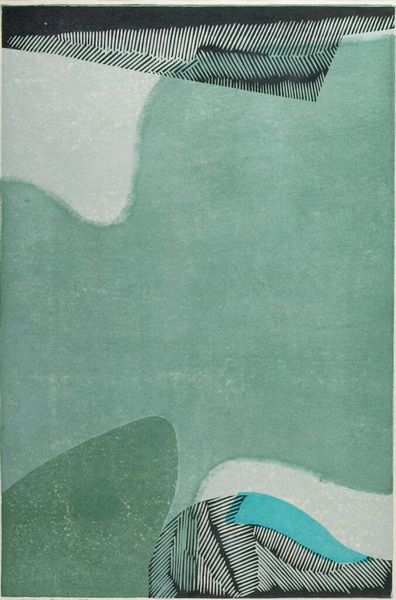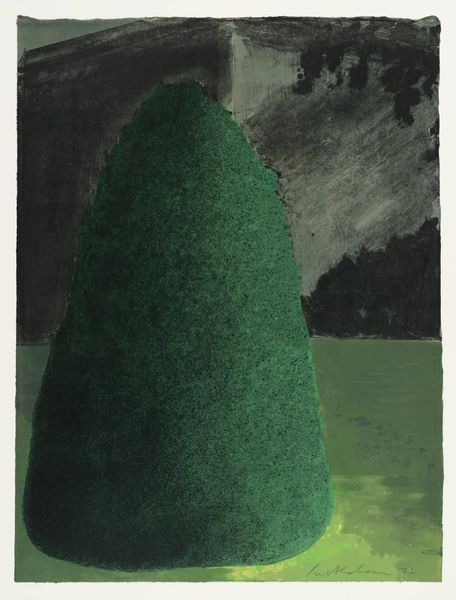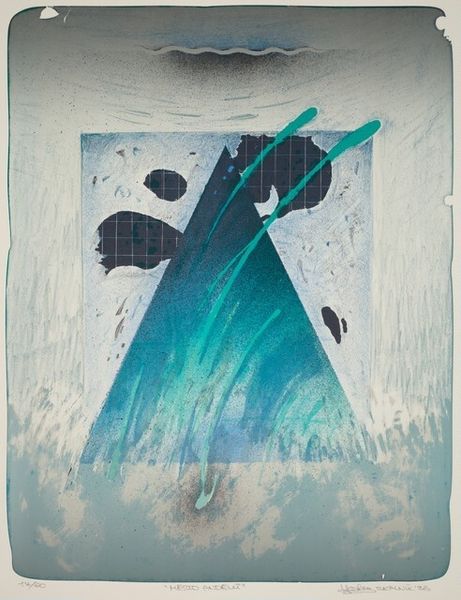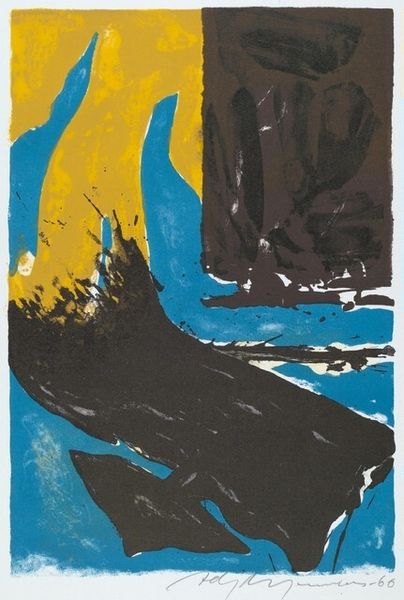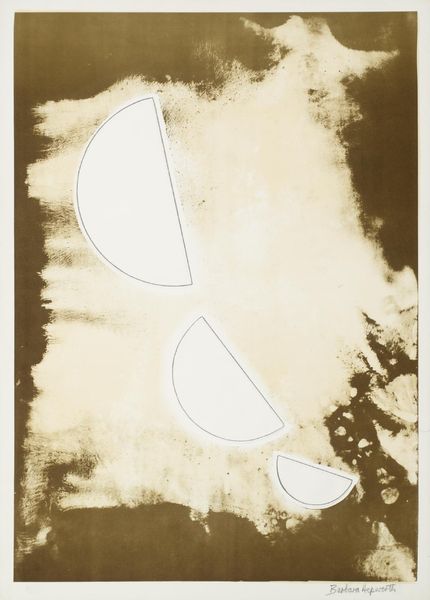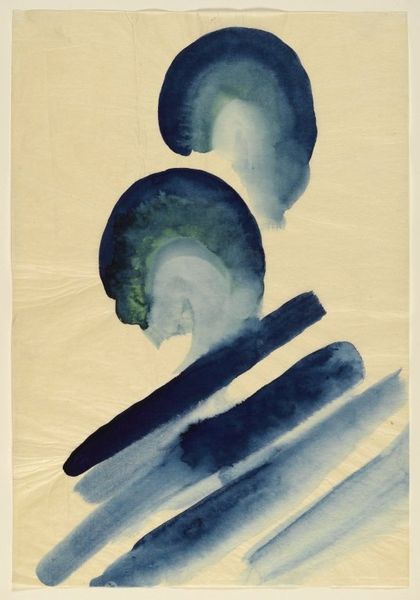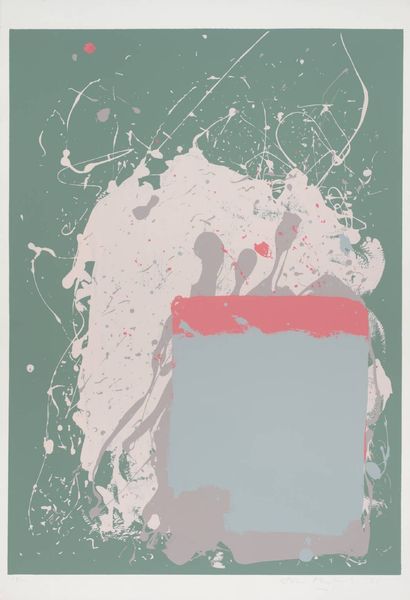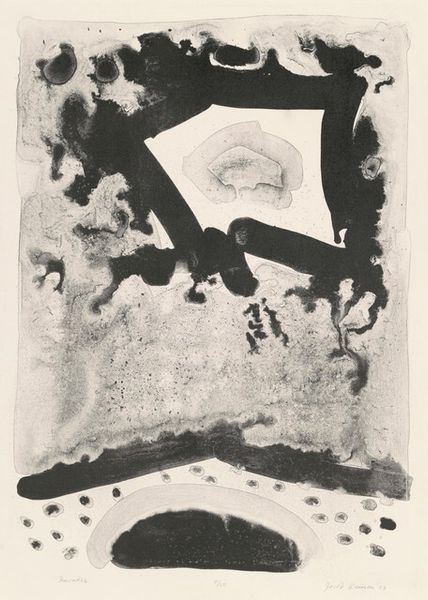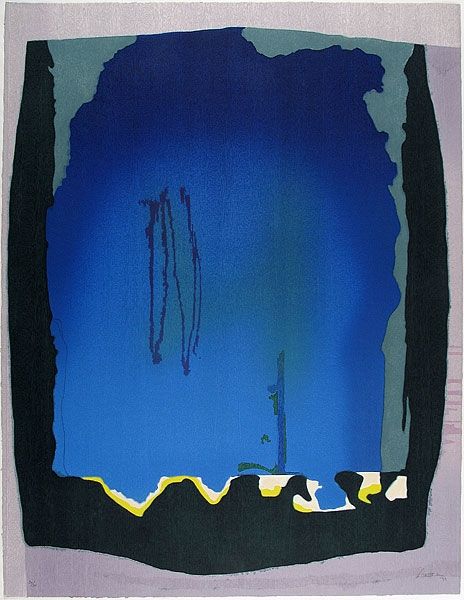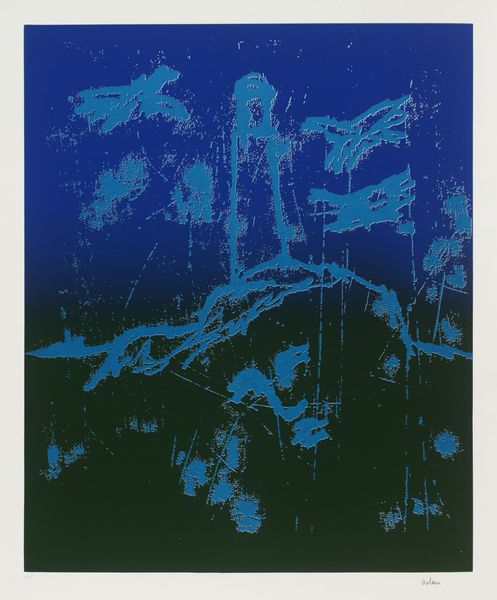
Copyright: National Gallery of Art: CC0 1.0
Curator: Oh, this is interesting! Looking at Wolfgang Gäfgen’s print, “La Cuillère,” from around 1976…it’s just wonderfully bizarre. Editor: Bizarre is right. The stark, flat colours hit you first. Then you register…is that a figure being spoon-fed by some looming green hand? The materiality here feels incredibly deliberate. Curator: It does, doesn’t it? It’s that naive, almost childlike simplicity, rendered with this kind of flat, almost Art Deco precision. The nude is abstracted, softened, almost…vulnerable. It feels like a dreamscape, where power dynamics are exaggerated, unsettling even. Editor: Gäfgen uses printmaking to flatten and depersonalize his figures, treating bodies and tools as forms. We are not invited into his subjectivity. And is that a soup kitchen instead of the artist studio? Where are these supplies coming from and going? Curator: Exactly! The composition almost teeters on the edge of caricature, but there's something genuinely moving there too. It’s like a dark fairy tale— the colour palette feels strangely cold. That teal against the olive green, creates a really specific tension. Editor: It's the tension of industrial reproducibility meeting handmade design! With printmaking's democratized potential for mass consumption. The question of consumption dominates, right down to the title? How can we not be made conscious about production and circulation? Curator: That’s it, it's playing with those contrasts. It draws on both the intimate gesture and an anonymous act. I'm thinking about control—who is in control here? Is the figure being nourished, or manipulated? Are they even human, or a lump of clay to be spooned? Editor: Well, given the time period, with Post-War tensions around material consumption, is Gäfgen suggesting we too are passively shaped by commodities that fill our lives? Our needs determined less by us, and more by material supply chains? Curator: Oh, that's an incredible reading! I hadn’t considered the commentary on postwar consumerism quite so directly. That spoon, then, becomes this tool of not just physical, but also societal feeding. It all just swirls together. Editor: Exactly. Gäfgen compels us to look again at how industrial labor and even our personal habits affect our autonomy. Not bad for something that presents so simply. Curator: Not bad at all. Thanks for bringing the work into sharper focus! I see it differently now. Editor: Anytime. Now, I am actually hungry.
Comments
No comments
Be the first to comment and join the conversation on the ultimate creative platform.
